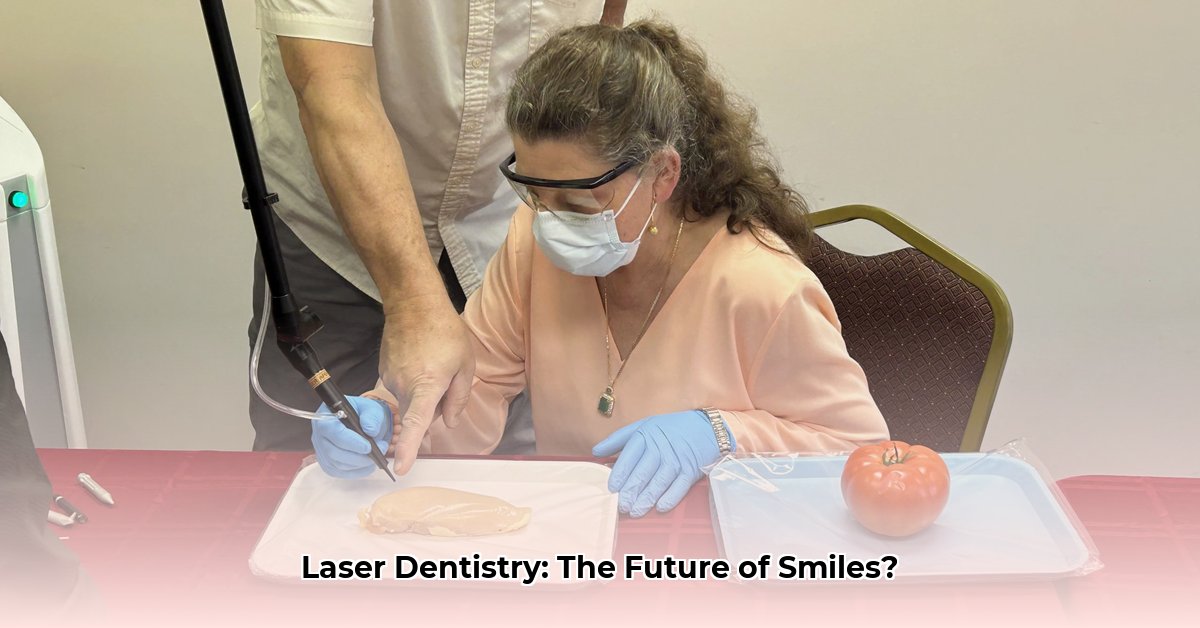
A Review of Dr. Convissar's Contributions to Laser Dentistry
This review examines the contributions of Dr. Robert Convissar to the field of laser dentistry. Due to limitations in publicly available, detailed research data on Dr. Convissar's specific techniques, this assessment relies on a synthesis of his published works, presentations, and general recognition within the field. The analysis acknowledges inherent biases stemming from the limited accessible data while emphasizing the need for further research to comprehensively evaluate his impact.
Background on Laser Dentistry
Laser dentistry utilizes lasers—highly concentrated beams of light—to perform various dental procedures. The advantages of lasers include reduced bleeding, faster healing times, and enhanced patient comfort compared to traditional methods. Different laser types, such as CO2, Nd:YAG, Erbium, and Diode lasers, each possess unique properties affecting their suitability for specific applications. The choice of laser depends on factors such as the target tissue (hard or soft), desired procedural outcome, and depth of penetration required.
Dr. Convissar's Contributions
Dr. Convissar's extensive career has significantly impacted laser dentistry. His textbook, Principles and Practice of Laser Dentistry, serves as a valuable resource for practitioners. His numerous presentations at national and international conferences have disseminated his knowledge and techniques broadly. Dr. Convissar's attainment of Diplomate status from the American Board of Laser Surgery further underscores his expertise and contributions to the field. While specifying his contributions to each laser type (CO2, Nd:YAG, Erbium, Diode) is challenging due to limited data, his overall impact on the field's advancement is undeniable. His work has likely advanced techniques across these laser types, though specific details require further investigation.
Critical Evaluation: Acknowledging Data Limitations
Assessing the precise impact of Dr. Convissar's techniques is hampered by a scarcity of publicly accessible, detailed research data. This lack of information limits a definitive quantitative analysis of his contributions. Without robust clinical trials and outcome studies, it is difficult to definitively quantify the success rate or long-term effects of Dr. Convissar's specific techniques. This limitation, however, doesn't diminish his recognized expertise and influence within the laser dentistry community. Instead, it highlights the need for future research. Any assessment of his contributions based on available information must therefore acknowledge this inherent bias towards qualitative rather than quantitative analysis.
Future Directions: Research Priorities
To comprehensively assess Dr. Convissar's long-term impact, several key research areas require attention:
Comparative Effectiveness: Rigorous, peer-reviewed studies are needed to compare Dr. Convissar’s techniques with established methods across different laser types. These studies should focus on objectively measurable outcomes such as treatment speed, patient comfort, complication rates, and long-term tissue health.
Longitudinal Studies: Long-term follow-up studies are crucial to assess the durability and potential long-term effects of his methods. This would provide valuable data regarding both the benefits and potential drawbacks of his techniques.
Mechanism of Action: More research is necessary to understand the precise mechanisms by which Dr. Convissar's techniques achieve their results, particularly regarding the specific interaction of different laser wavelengths with various dental tissues. This granular understanding would improve the prediction and optimization of outcomes.
Conclusion
Dr. Robert Convissar's contributions to laser dentistry are significant, demonstrated by his textbook, numerous presentations, and recognized expertise. However, a full evaluation of his impact necessitates further research. The lack of detailed, publicly available data on specific clinical outcomes presents a limitation to this review. Future studies focusing on comparative effectiveness, longitudinal outcomes, and detailed mechanism of action will provide a more comprehensive understanding of his legacy and contribute to optimizing laser dentistry practices. The need for this research underscores the importance of rigorous scientific evaluation in advancing the field.